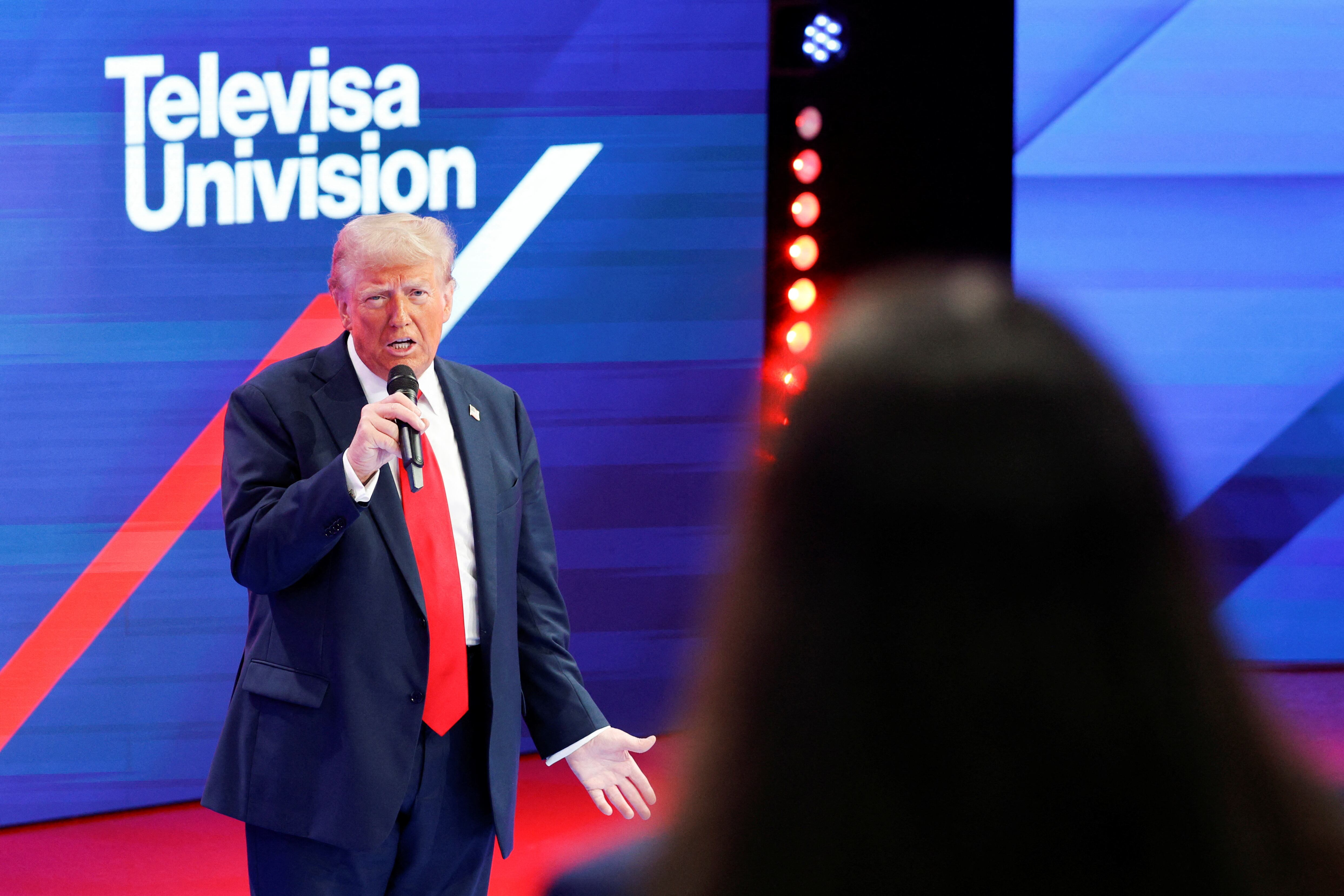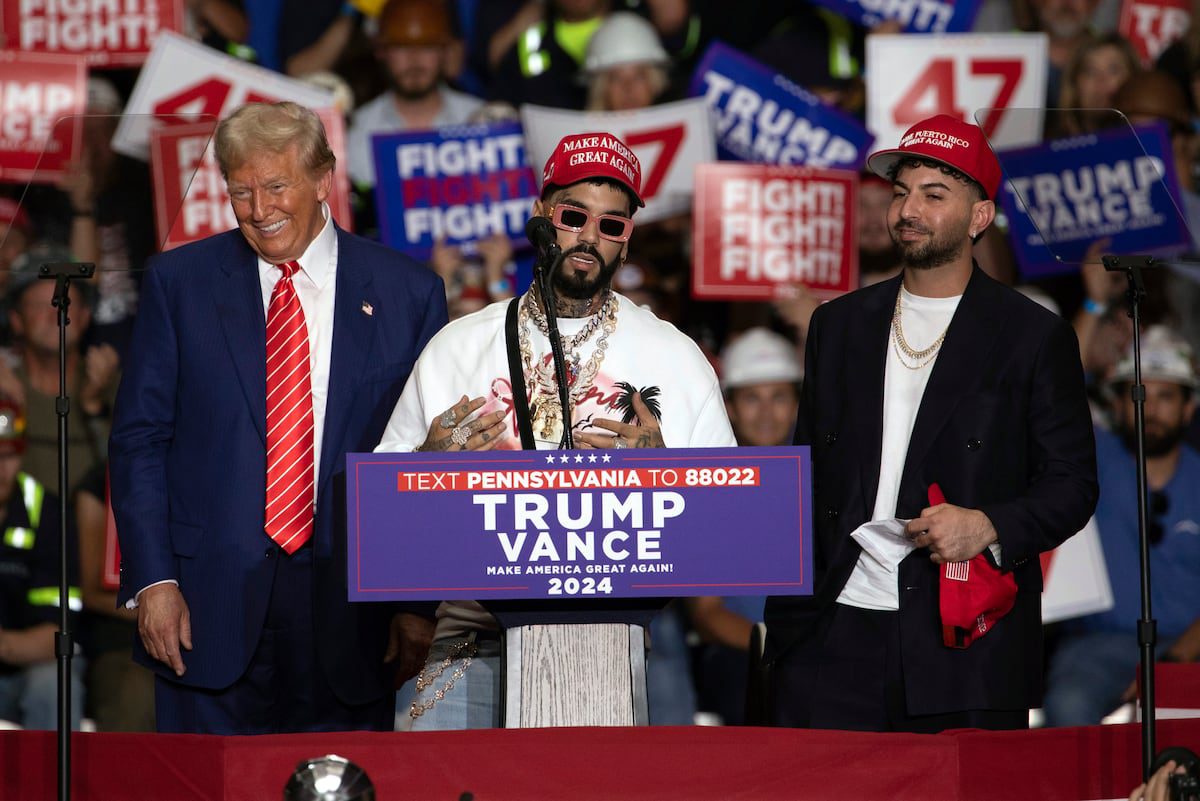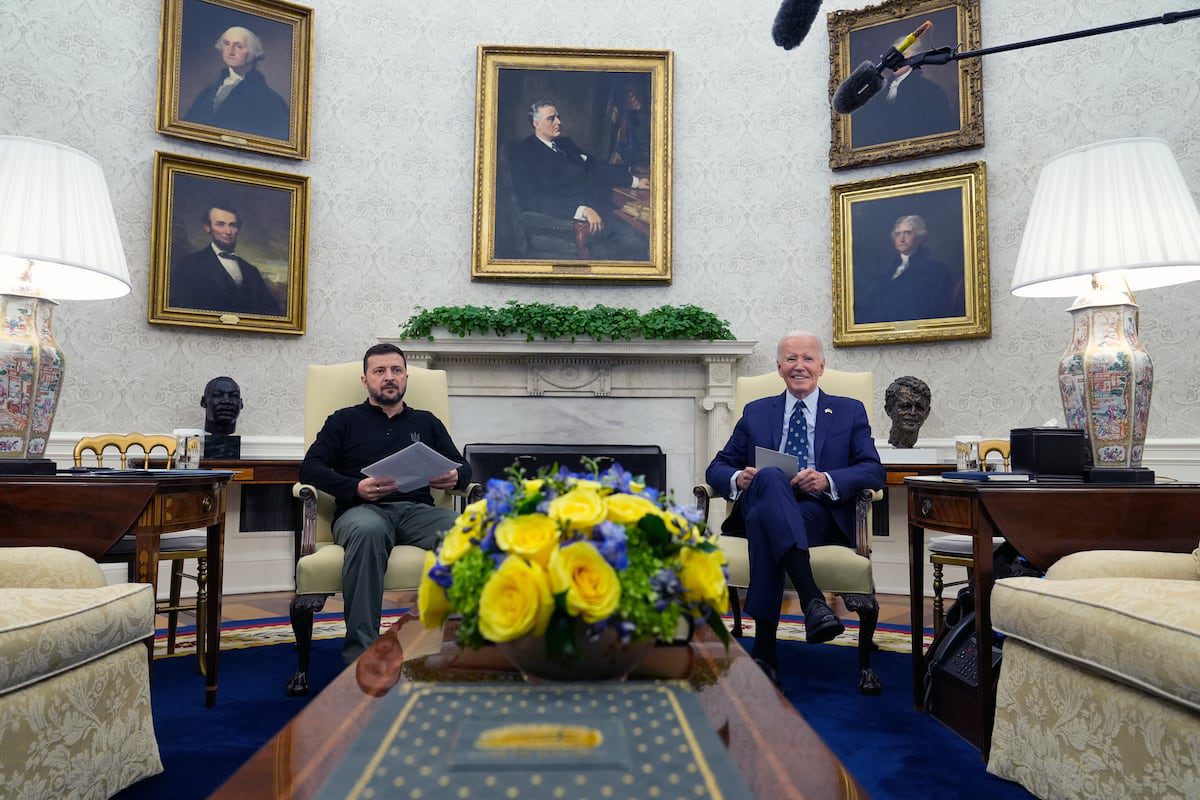
Ramiro González grabbed the microphone and addressed former President Donald Trump: “I am a Republican, no longer registered though, and I want to give you the opportunity to win back my vote.” It happened at the town hall organized by Univision in Miami last Wednesday. It was an opportunity served on a silver platter to speak directly to a Latino voter and show him why he represents the best path forward for the United States. But Trump turned down that chance in several minutes of response in which he minimized González’s concerns about the assault on the Capitol by saying that January 6, 2020 was “a day of love,” attacked Joe Biden and spoke about the border. “I hope that one day we will get your vote. Sounds like maybe I won’t, but that’s OK,” he said at the end.The Latino vote will be decisive in these elections, probably like never before. With a record population, the Hispanic electorate makes up a significant percentage in various of the swing states which will determine the outcome of the elections, such as Nevada, Arizona, or Pennsylvania. In addition, with 15% of Latinos still undecided about who they will vote for in this final stretch, attracting their support may be one of the final key things that both campaigns do.Given this specific context, within one of the closest elections in living memory, it might be logical to think that there is a detailed strategy to seek that elusive “Latino vote” that, according to so many experts and analysts, has the potential to tip the scale in either direction. In fact, since he emerged on the political scene, Trump has gradually improved his support among the Latino community, generating countless theories as to why this may be: an innate conservatism among Latinos, greater assimilation among the new generations and, therefore, resonance of nationalist messages, or the growth of evangelism are just some of the explanations.However, within the Republican Party, an explicit strategy to gain support among Latinos seems nonexistent or simply inaccessible. This newspaper did not receive a response to various attempts to contact the Trump campaign and his party. The most reputable media in the country, which have talked at length about the Latino vote, have not reported on it; those closest to the party have not either; and the experts, academics and former political strategists-turned-analysts, despite their networks of contacts, have not revealed a campaign plan and have only been trying to decipher it from the outside.To understand what has been done differently in this campaign, it is essential to consider what has always been done, says Professor Mindy Romero, director of the Center for Inclusive Democracy at the University of Southern California (USC). “Both parties always have outreach campaigns for Latinos, but historically those efforts fall short,” Romero explains.Party models have tended to define Latinos as voters who are less likely to vote, and therefore, fewer resources and efforts were usually devoted to seeking them out and trying to convince them compared to other groups. The result, says Romero, were campaigns, election after election, that were limited to sending correspondence in Spanish, but only in contested districts, to holding some “Latino” campaign event, with mariachis or a salsa group, and little else. “The objective was usually more to demonstrate to the bases that they were in contact with the Latino population, than to seek new votes within the community,” says the researcher, who focuses on the intersection between political behavior and ethnicity.This year, Republicans have done a bit of this with structured groups, endorsed by the official campaign although not directly part of it, on the ground and staffed by volunteers who distribute information in key areas with a high Latino population. Likewise, mailers are distributed in Spanish and an ad was even launched in which the lyrics of the popular salsa song Juliana were changed to say “Kamala, qué mala eres.” It has not been an avalanche of outreach by any means.Donald Trump participates in the town hall hosted by the Spanish-language network Univision, in Doral, Florida.Marco Bello (REUTERS)On the other hand, the content of the messaging has not changed to be directed at the Latino electorate. Supported by surveys that show that the issue that most concerns Hispanics in the United States is the economy, the same as for the general population, the Republicans seem to have decided that they do not have to treat the Latino voter differently than the average voter. This can be seen in the even lower presence of Spanish in the Republican campaign than in past cycles, since 80% of Latinos in the country predominantly get their information in English, according to figures from the Pew research center.“I haven’t seen an obvious and transparent Trump campaign, nor one that is well-informed about the differences within the Latino community,” Romero says, before assessing the impact of the anti-immigration message that is central to the campaign: “Trump walks a fine line especially on the issue of immigration. This year he is hitting the issue even harder, even when he is speaking to Latinos, because he has to show his base that he’s serious.” The way he has found that allows him to keep his hard-line speech without alienating Latino voters is to emphasize that his target is illegal immigrants.By now, the intuition that the former president’s anti-immigration rhetoric and the disparaging way he speaks of migrants, mostly Latinos, is a death sentence for his support in the community has been discredited by the facts. And with the focus on illegal immigration, Latinos who see a crisis at the border can share in the rejection of new migrants without feeling incoherent, since most of them were born in the country or immigrated through legal means.Not overtly including U.S.-born Latinos in his attacks may be having another effect: making the Latino population finally feel truly assimilated and considered a part of the country, no longer perpetual foreigners. It is an idea that political strategist and journalist Paola Ramos has theorized on as central to the gravitation of certain sectors of the Latino community to the far right in the United States. In fact, it can be heard on conservative Spanish-language media in the country, with a very strong audience in Florida or Texas. On an average program on one of these networks, it is not unusual to hear people say that “Democrats are racist because they change their messages” depending on the group they are with, while Republicans, on the other hand, “speak the same to everyone.”Conservative media, in English or Spanish, may also be playing an important role in Trump’s campaign. Fox News, the king of ratings and right-wing media in the United States, is the leader with the Latino community. And less than a week ago, they launched a daily afternoon program in Spanish. At the local level, media that openly support the Republican candidate and constantly attack the Democrats are also audience leaders. In Miami, La Nueva Poderosa, a conservative radio station that is part of a group of religious media in Spanish at a national level, is the most listened to among Latinos of all ages.These information patterns, which are even overshadowed by Latinos who get their information through social media, help shape people’s opinions and may contribute to explaining the appeal that voters see in Trump’s rhetoric. There are also studies that indicate that for these same reasons, Latinos are the segment of the population most susceptible to misinformation, one of the most used weapons in the Trumpist arsenal.With two weeks to go until Election Day, the final inclination of the Latino vote is one of the biggest unknowns that remain. And inevitably, when the name of the new president of the United States becomes known, the headlines will dissect the success or failure of the “non-strategy strategy” of the Trump campaign to win over Latino voters.Sign up for our weekly newsletter to get more English-language news coverage from EL PAÍS USA Edition

Deciphering the Republican campaign’s strategy to win the Latino vote: ‘They speak the same to everyone’ | Elections 2024
Tiempo de Lectura: 5 Minutos
What’s your Reaction?
0%
Love
0%
Smile
0%
Haha
0%
Sad
0%
Star
0%
Weary
Shares:







